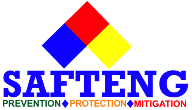Safety Management in 2022 – Leadership without an SMS?
Do you agree with this “safety leadership” quote? “A system or a procedure never achieved anything, it is people being committed to implementing the system that achieves the performance needed.” It comes from the Safety Leadership Group (SLG) of which I am a fan…. Membership Required You must be a member to access...
Safety Management in 2022 – Leadership without an SMS? Read More »
